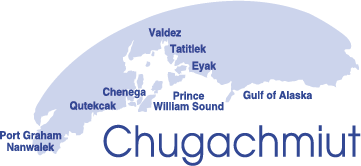Volcanic Ashfall Preparedness - April 1, 2025

How to Stay Safe Before, During, and After an Ashfall Event
Volcanic ash can be dangerous to people, animals, and buildings. Volcanic ash is mostly made up of tiny pieces of rock, minerals, and glass. It can cause breathing problems, damage roofs, and make water unsafe to drink. Individuals most at risk are Elders, children, and those with pre-existing respiratory issues.
Possible health risks of ashfall:
- Cough or wheezing
- Shortness of breath
- Heightened respiratory and cardiovascular issues
- Discomfort and irritation of eyes, nose or throat
Follow these simple steps to stay safe.
Before an Ashfall Event
- Stay Updated: Listen to local news and emergency alerts about the volcano.
- Prepare a Safety Kit: Pack N95 masks or dust masks, goggles, duct tape, plastic sheeting, water, food, and any necessary medicine.
- Protect Your Home: Seal windows, doors, and vents with plastic and tape.
- Store Water: Keep clean drinking water in sealed containers. Store at least one gallon of water per person per day for a minimum of three days, including additional water for pets.
- Plan for Power Loss: Have flashlights, batteries, and a backup power source.
During an Ashfall Event
- Stay Inside: If possible, avoid going outside.
- Prevent Ash from Entering Your Home: Keep windows, doors, vents, and woodstove dampers closed. Turn off the HVAC systems (heating, ventilation, and air conditioning). Seal gaps where ash can enter, and use a damp towel at the base of external doors. Turn off house fans.
- Electronics: Turn off electronics and cover with plastic sheets.
- Wear Protection: If you must go outside, wear a proper fitting N95 mask, goggles, long sleeves, pants, and gloves. Clear ash from clothing, shoes and pets before going indoors.
- Take Care of Animals: Keep pets indoors as much as possible. Brush or vacuum them when coming back inside.
- Do Not Drive: Ash can make roads slippery and damage car engines.
After an Ashfall Event
- Clean Up Safely: Wear a mask and goggles when cleaning up ash. Use a damp cloth or wet mop to clean surfaces.
- Air Safety: Change furnace and ventilation filters. Use a HEPA air cleaner/filter.
- Dispose of Ash Correctly: Do not wash ash into drains; bag it and throw it away.
- Check Your Roof: Remove heavy ash to prevent roof collapse.
- Clean Your Car: Change air filters and wipe off ash from the engine and windows.
- Stay Alert: Ash may continue to settle, so follow updates from local authorities.
Health Risks of Volcanic Ash
- Breathing Problems: Ash can make it difficult to breathe, especially for individuals with pre-existing lung conditions.
- Eye Irritation: Ash can cause itchy, red eyes and even scratches on the surface of the eye.
- Skin Issues: Direct contact can cause dryness and irritation.
- Water Contamination: Ash can make water unsafe, so always filter and boil water before drinking.
State of Alaska Volcanic Eruption Resources:
- Alaska Volcano Observatory: https://avo.alaska.edu/
- Direct link to latest Mt. Spurr activity: https://avo.alaska.edu/volcano/spurr/activity
- Sign up for local notifications: https://volcanoes.usgs.gov/vns2/
For more information, visit:
- International Volcanic Health Hazard Network (IVHHN) at www.ivhhn.org
- Information about volcanic ash: https://volcanoes.usgs.gov/volcanic_ash/health.html
- Alaska Native Tribal Health Consortium at https://www.anthc.org/news/protect-yourself-and-community-against-volcanic-ash/
If you have any respiratory concerns or need medical guidance after an ash fall event, don’t hesitate to contact your local clinic. Your health and safety are our top priorities.


